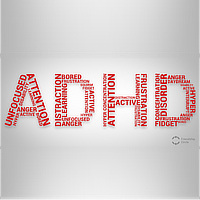What is it like to have ADHD?
There is a lot of prejudice and misconception about ADHD. Today - the final day of the international ADHD awareness month - we are releasing the video on ADHD that shines a light on living with ADHD, from a personal and a scientific perspective. Created by a team of young researchers of the MiND research project in collaboration with Aggressotype, CoCA and Eat2beNICE. iPSYCH researchers are participating in both Aggressotype and CoCA.

Please watch the video Shine a light - understand ADHD and share it with everyone you know!
In the video, we see researchers Eric Taylor, Barbara Franke, Philip Asherson, Corina Greven and Kai Syng Tan, as well as Andrea Bilbow from ADHD Europe and Aziz, Evie Travers and Bryn Travers. They all talk about what ADHD is, and what it’s like to have ADHD, in order to fight stigma and (self)blame. We therefore aim to distribute this video all across the world!
Below you´ll find additional information on the documentary.
On behalf of the involved consortia,
Professor Anders Børglum, Department of Biomedicine, AU
More information on the mini documentary ‘Shine a light – understanding ADHD’
Short description of the video and why it was made
“I feel like a universe, stuffed within a shoebox” – this is how Bryn Travers describes what it’s like to have Attention Deficit / Hyperactivity Disorder (ADHD). On 31 October 2018 the video ‘Shine a light – understanding ADHD’ is released: a short documentary about what ADHD is, both from a personal and from a clinical perspective. The video was a created through collaboration between four EU-funded, international consortia of researchers that investigate ADHD and its origins: MiND, Aggressotype, CoCA and Eat2BeNICE [see website links below].
The hope is that this video will help young people and adults diagnosed with ADHD, or who suspect they have ADHD, as well as their family and friends, to understand the condition better. The video is in English, with subtitles in English, German, Dutch, Italian, Spanish, Hungarian and Swedish.
The release of this video co-occurs with the last day of the international ADHD awareness month. This initiative of the international ADHD patient organisations aims to raise awareness about ADHD, and funding for more research to better understand ADHD. Many events were organised worldwide this month to inform people about ADHD. Knowing more about ADHD and spreading awareness will help people to better understand (people with) ADHD. This will reduce stigma and (self)blame.
More information about us
This video was a created through collaboration between four EU-funded, international consortia of researchers that investigate ADHD and its origins. The idea came from two junior scientists, Laura Ghirardi and dr. Nicoletta Adamo. They were supported in creating the video through the MiND Training program and by the other junior scientists from MiND.
The video was recorded by 4QUARTER FILMS.
More information about the researchers and consortia:
Aggressotype (origins of aggression in psychiatric disorders, such as ADHD)
CoCA (origins of comorbid disorders with ADHD in adolescents and adults)
Eat2BeNICE (how nutrition and lifestyle influence mental health in psychiatric disorders)
What is this video about?
In this mini-documentary, we have asked people with ADHD and their relatives what is like to have ADHD, what are the challenges and what are the things they like about ADHD. We have also asked clinicians and researchers working with ADHD to explain more about the origins of the disorder, what they have learnt from their experience working with patients, but also what are the main questions that research is trying to answer about ADHD.
Many children, adolescents and adults suffer from ADHD. ADHD is a complex disorder that affects people differently. Generally people experience problems in daily life, especially with respect to controlling attention, impulses and emotions. At the same time, people with ADHD enjoy their creativity and positive energy. Medication is effective for many people with ADHD, but not for all. A downside of the medication is that it needs to be taken every day, and it does not cure someone from the disorder. Other types of treatment should therefore also be offered and investigated. Knowing more about ADHD and spreading awareness will help people to understand what causes their behaviour. This will reduce stigma and (self)blame.
Who is in the video?
The video features four of the most well-known researchers in the field of ADHD: dr. Eric Taylor is Emeritus Professor of Child and Adolescent Psychiatry at King’s College London, dr. Philip Asherson is professor of Molecular Psychiatry at King’s College London, dr. Barbara Franke is professor of Molecular Psychiatry at Radboud university medical center Nijmegen, in The Netherlands, and dr. Corina Greven is psychologist and behavioural geneticist at Radboud university medical center Nijmegen. Next to these scientists and psychiatrists, we see three people with ADHD (Bryn Travers, Evie Travers and Aziz), Andrea Bilbow, president of patient organisation ‘ADHD Europe’ and mother of two children with ADHD, and dr. Kai Syng Tan, researcher and artist at King’s College London, who also has an ADHD diagnosis.
In the video they talk about what ADHD is and what it is like to have ADHD, about the pro’s and con’s of ADHD medication and why other types of treatment should also be developed, about stigma and misconceptions and why education is so important, and about the positive aspects of ADHD.
